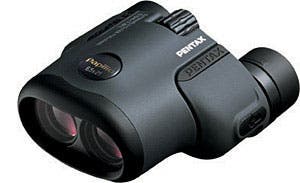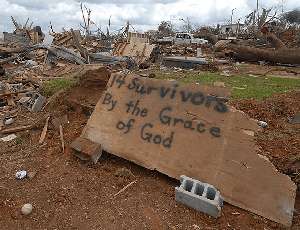Cars come in so many different sizes, shapes, and colors it makes them the ideal photographic subjects, but capturing images at shows, museums, and races can be a challenge for many reasons. Here’s the last group of tips to help you create memorable photos at the n car show you attend.
Tip #6:
Explore unconventional views of the car. Try low angles and tilt the camera to provide a dynamic image. One of the disadvantages of using low camera angles and wide-angle lenses is that sometimes wheels will not appear round because of a combination of distortion at the edges of the lens and the camera angles used. If that’s the kind of thing that bothers you, you will need shoot with view cameras as Paul Peregrine does for the back cover of Clive Cussler’s novels.
The crowds at most car shows are some of the most polite people you will find anywhere. However, they can make it difficult to use a tripod so I bring one only occasionally and some museums don’t permit their use without a permit.
Monopods provide a steady platform for your camera in low light conditions, such as indoor museums and end-of-day outdoors shots, and you can use a tabletop tripod for on-the-ground low angle shots. Image Stabilization lenses, like Canon’s EF 28-135mm lens, let you hand hold slower-than-normal shutter speeds while maintaining small enough apertures to keep most of the car in focus. Fast films or ISO settings can also help in letting you shoot at hand-holdable shutter speeds.
When space and conditions permit, bring a ladder. It will give you the ability to make images from high angles instead of the ubiquitous eye-level shots everybody else makes. From a higher perch you can include the ground or grass as a background to make your car photographs look different from one another as well as the other dude’s. But don’t assume that even a step stool is welcome at a car show or outdoor exhibition. Ask first. Keep the ladder in your car and ask someone in charge before unfurling an 18-foot ladder like the kind you see in use here. This particular ladder was used at an outdoor museum and permission was requested and granted before I schlepped it to the shoot.
Note the Canon EOS 1n film camera slung over my shoulder while an EOS 10D with 16mm lens attached is used for test shoots. (The clients ended up ignoring the film and used the digital “tests” instead. Go figure.)
Image © 2003 Joel Aragon
Tips #7:
Dress for success. Dress comfortably and wear the kind of clothing you won’t be afraid to get dirty when laying on the ground to get an interesting camera angle. And be sure to wear a hat to keep the sun off your head and like the song says, “be sure to wear sunscreen.”
Shoot your own car. While visiting the Adam’s County Historical Museum, I asked permission to photograph my daily driver, a limited edition VW GTI 337, in front of their restored 1920’s Conoco gas station. Although originally captured in color with a Minolta Dimage Xt, I used The Imaging Factory’s (www.theimagingfactory.com) Convert to BW Pro Photoshop-compatible plug-in to convert the TIFF file into a slightly warm-tone monochrome image in keeping with the mood of the location.
Image © 2003 Joe Farace
Tip #8:
Get to the show early to take advantage of the best light, and stay late. As cars begin to leave, space opens up allowing you to photograph entire cars as well as some of the environment.
Mary and I arrived early at the 2003 International Auto Salon in Los Angeles, and while most cars were parked inside, there were a few interesting few ones parked outside, like this blue Nissan 350Z, that I shot with a Canon EOS 10D and Sigma 15mm lens. The ultrawide-angle lens enabled me to capture the car and the building with the show sign in the background, all in reasonably sharp focus.
Image © 2003 Joe Farace
Tip #9:
When photographing a car late in the day, ask the owner to turn on the parking lights to add a subtle glow to the side marker, taillights, and turn signals. Boy, this is one rule I don’t always remember, but when I do it adds just a trace of interesting highlights to the final photographs.
Mary always remembers to turn on the car’s side lights, like in this shot of me standing n to a 1983 Greenwood Corvette that I didn’t buy (I am still kicking myself about this one.) Image made with Konica KD-4000Z.
Image © 2003 Mary Farace
While almost all good car shows are crowded, the people attending are unfailingly polite when they see you’re making a picture, and it doesn’t make any difference if you’re using a one-time use camera or a Hasselblad. At a recent show, I had put myself into one of my characteristic pretzel-like contortions to photograph a colorful street rod, and after—and only after—I’d made the exposure, a gentleman who was standing nearby and out of my shot walked up and asked: “Are you an artist?” As I stammered for an answer that wouldn’t sound pretentious, he quickly added, “I never saw anybody take a picture like that.” If anything that’s the real lesson to be taken away from these tips and suggestions: Don’t let your automobile photographs look like everybody else’s.
Except as noted, all photographs ©2003 Joe Farace
Joe Farace is Colorado-based photographer/writer/auto enthusiast who has written or edited 24 books and 1300 magazine stories. You can see more of his automotive images at www.joefaraceshootcars.com and Digital-Fotofusion (http://www.digital-fotofusion.co.uk/)


